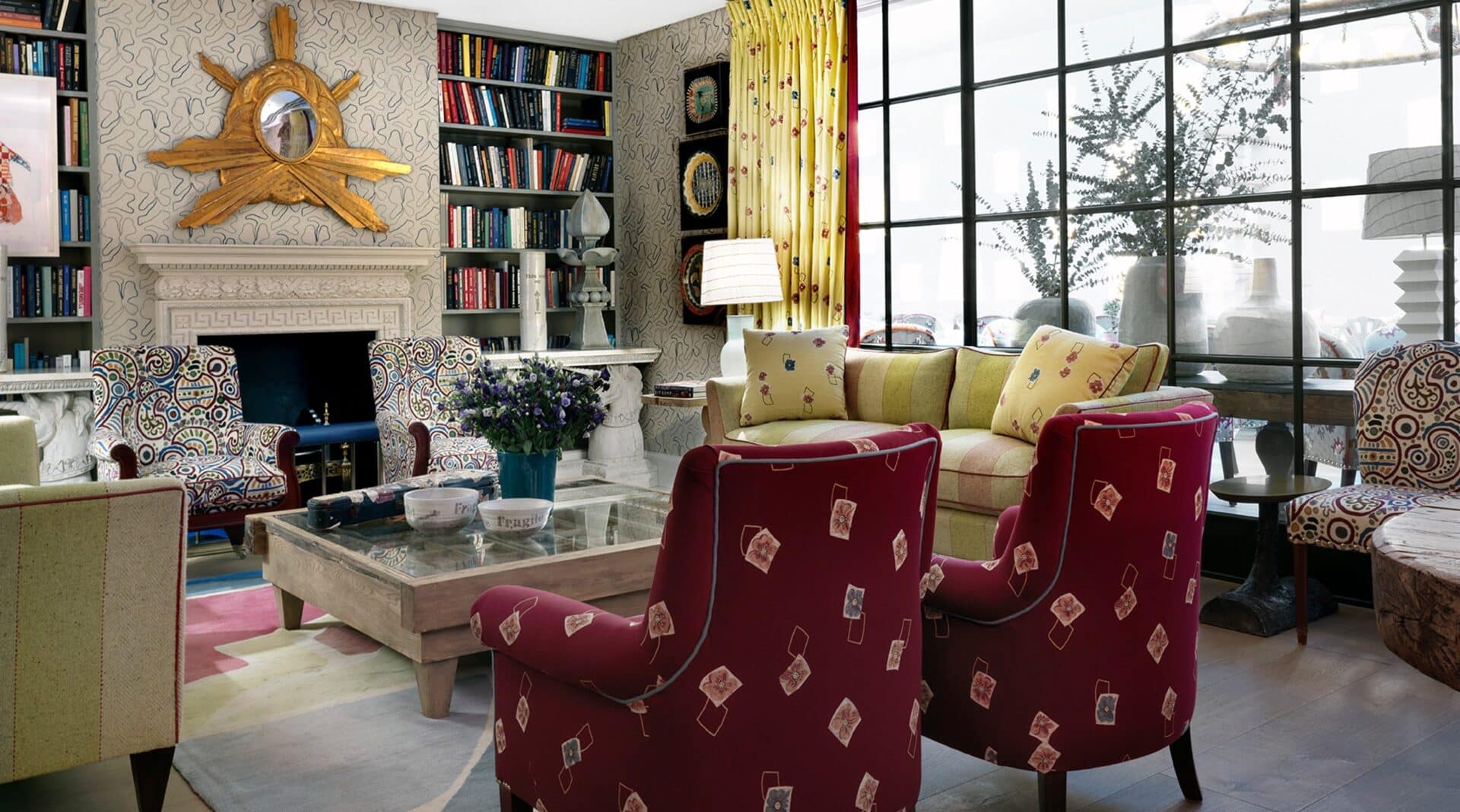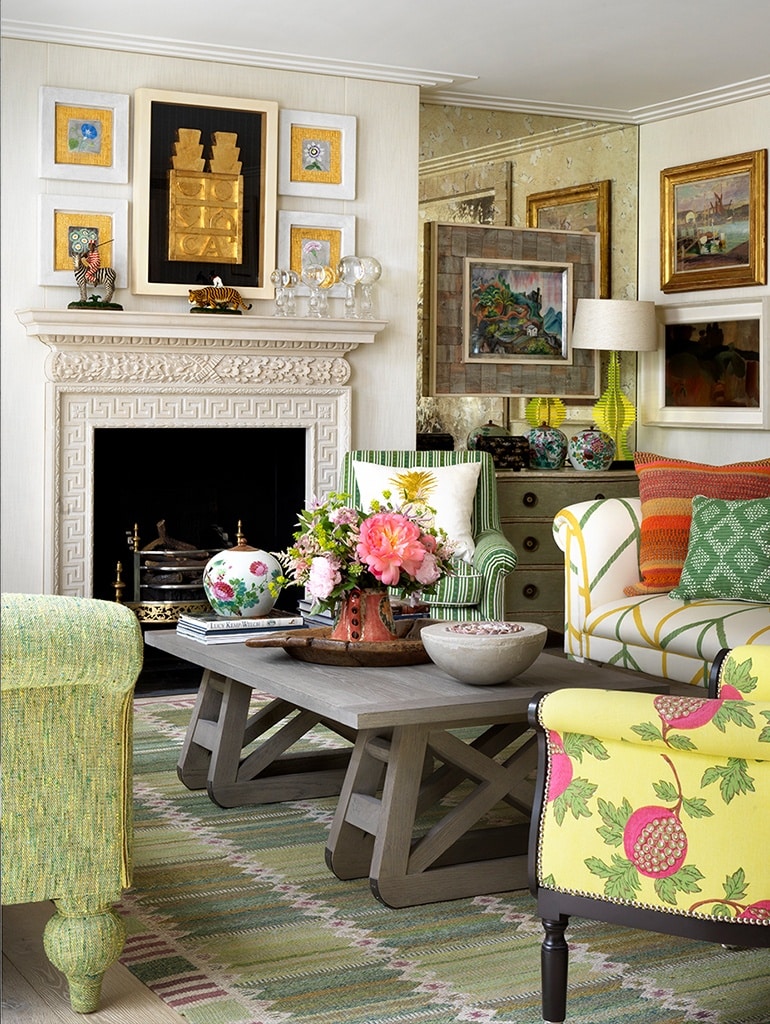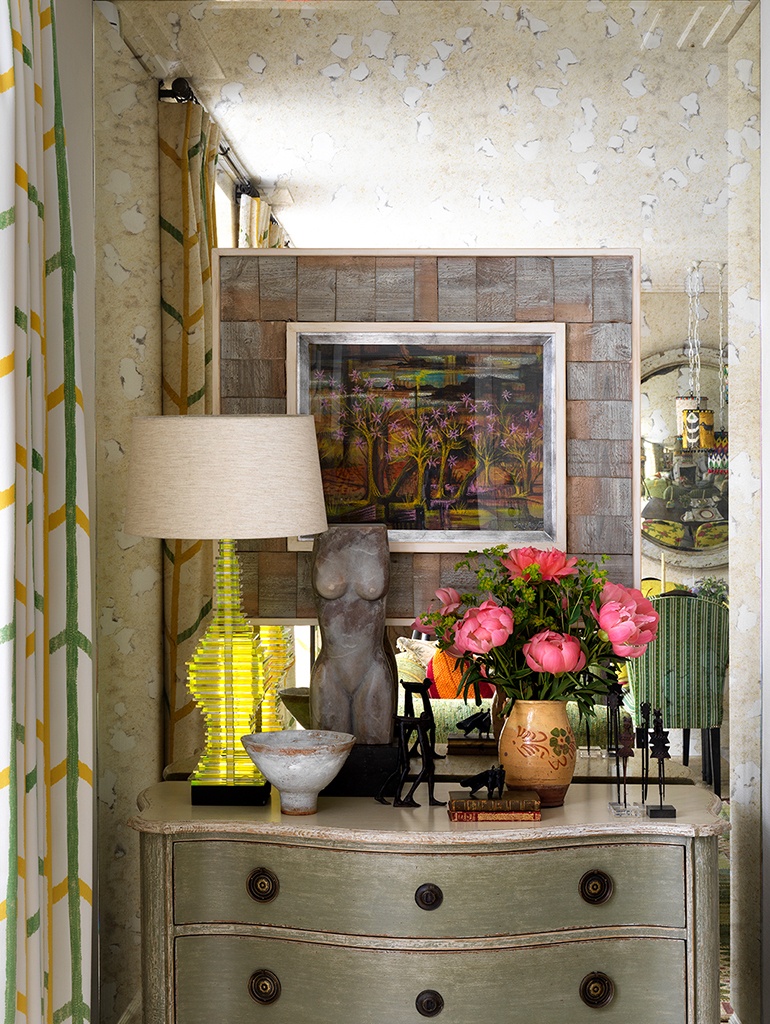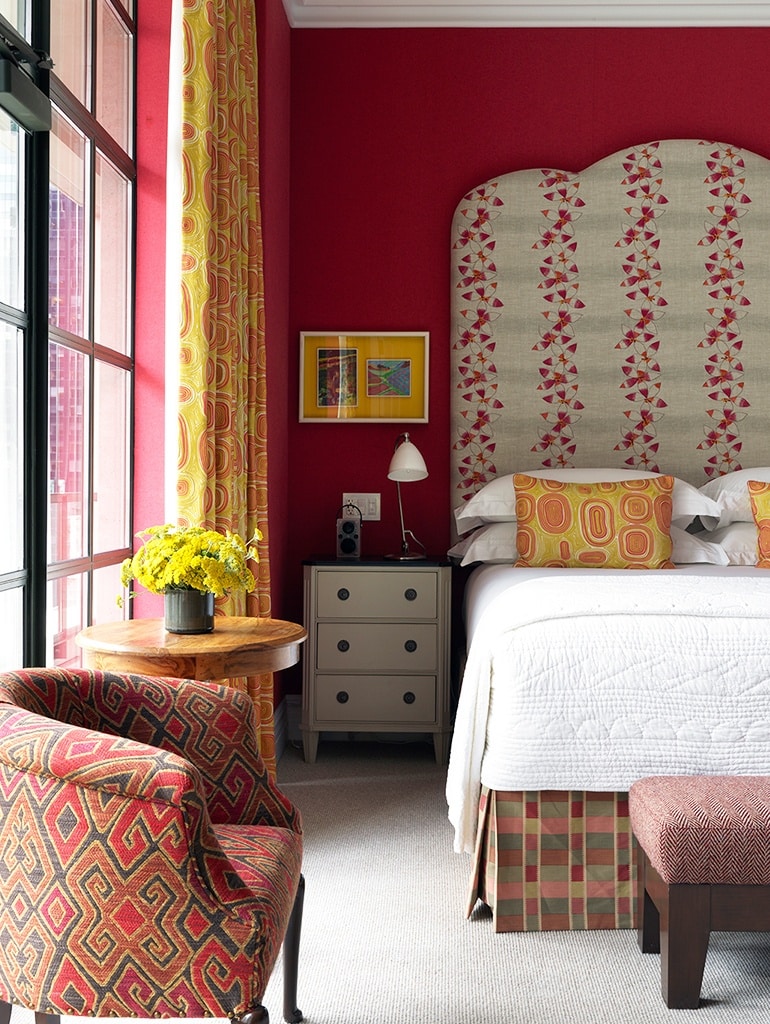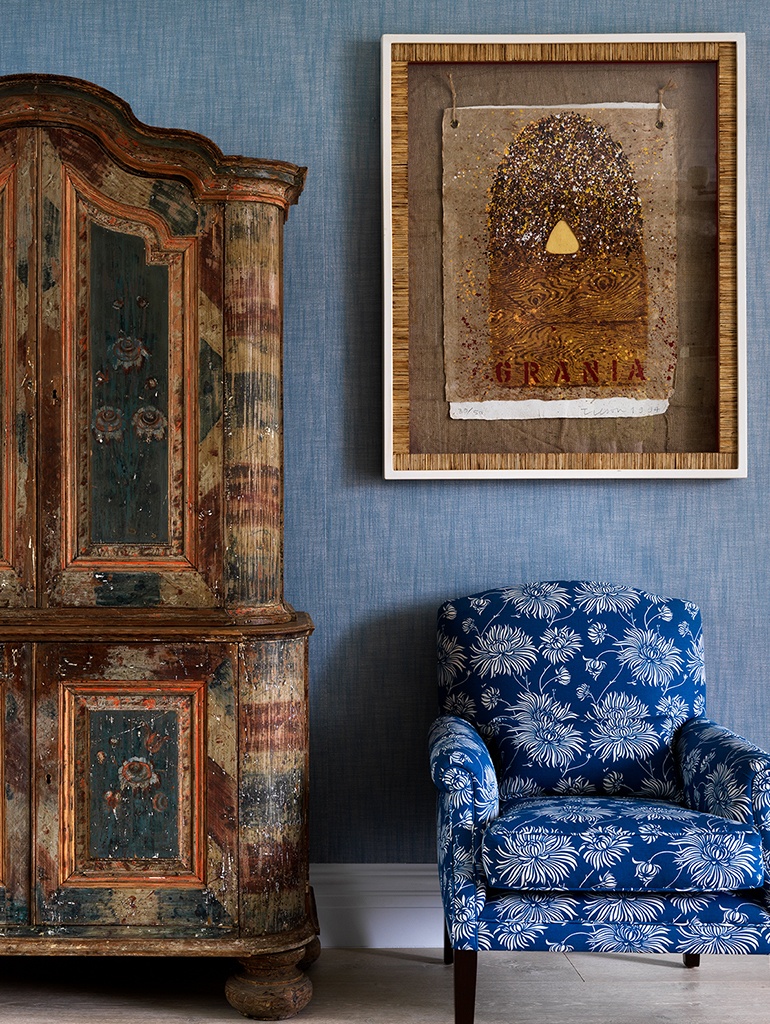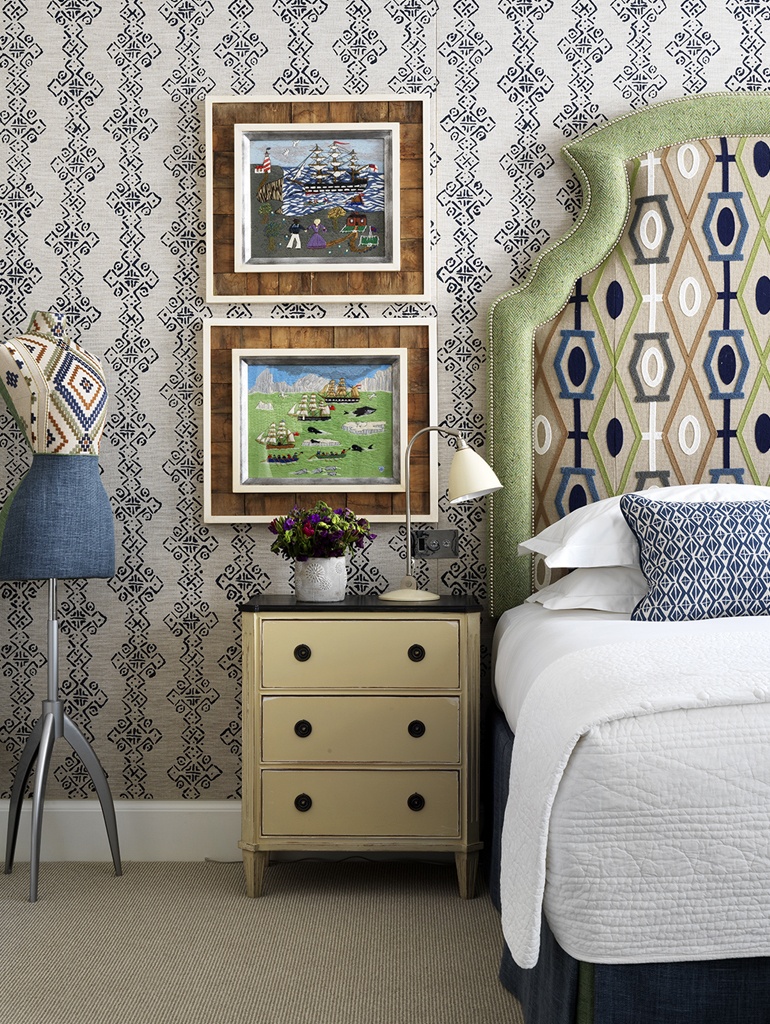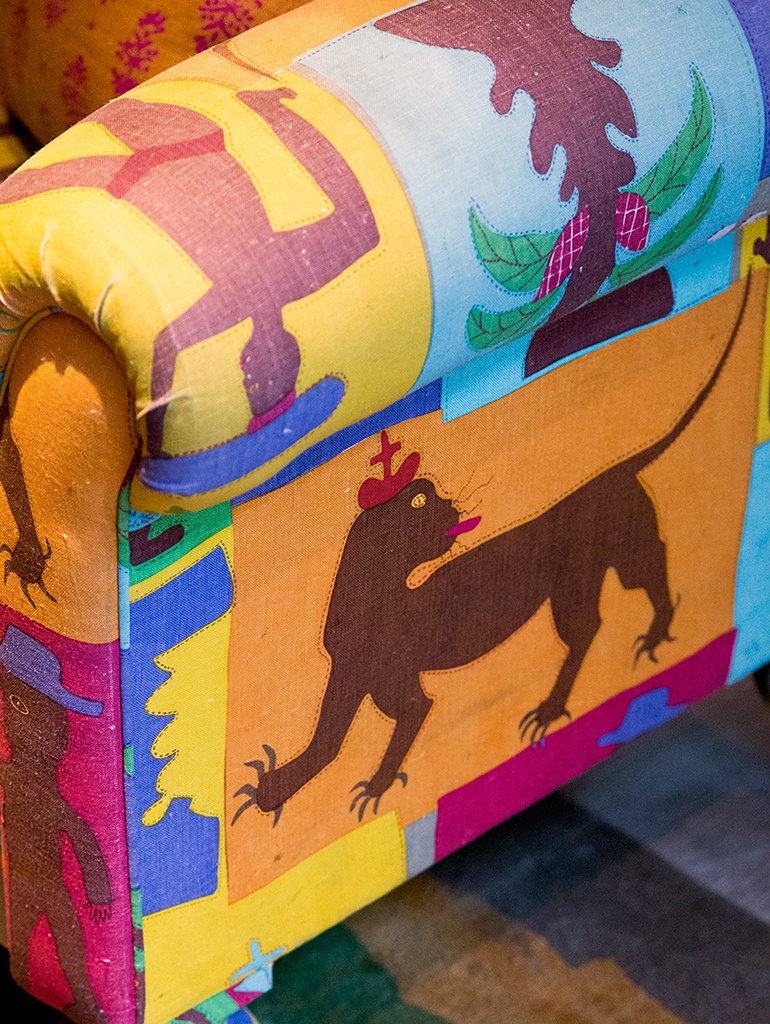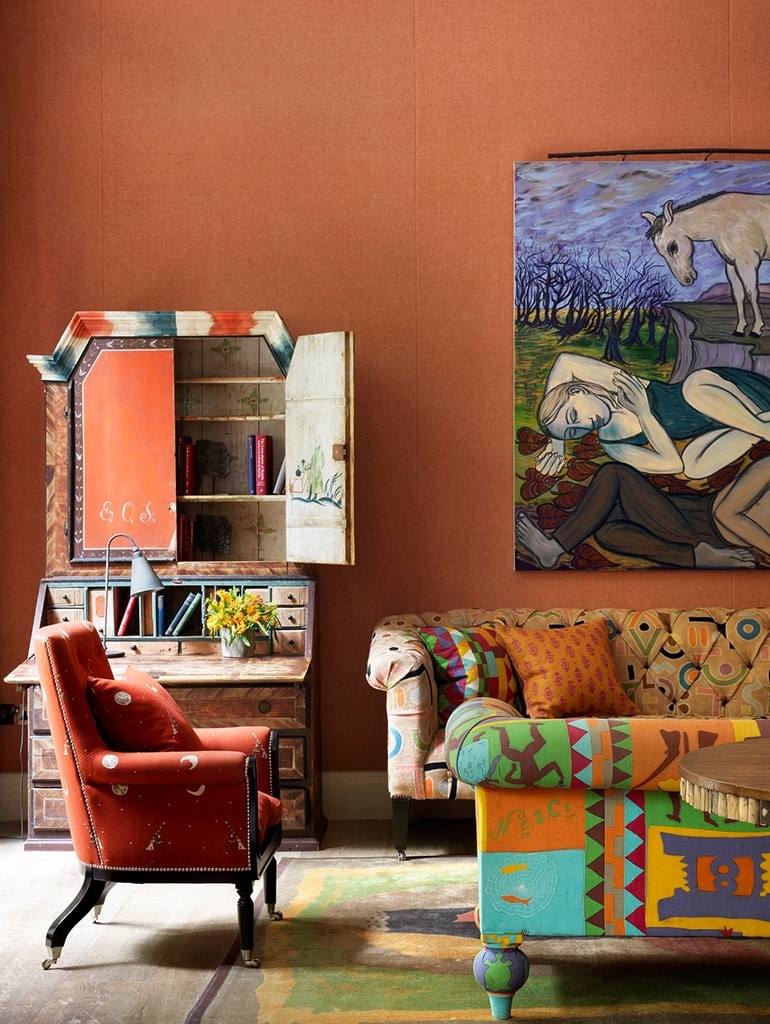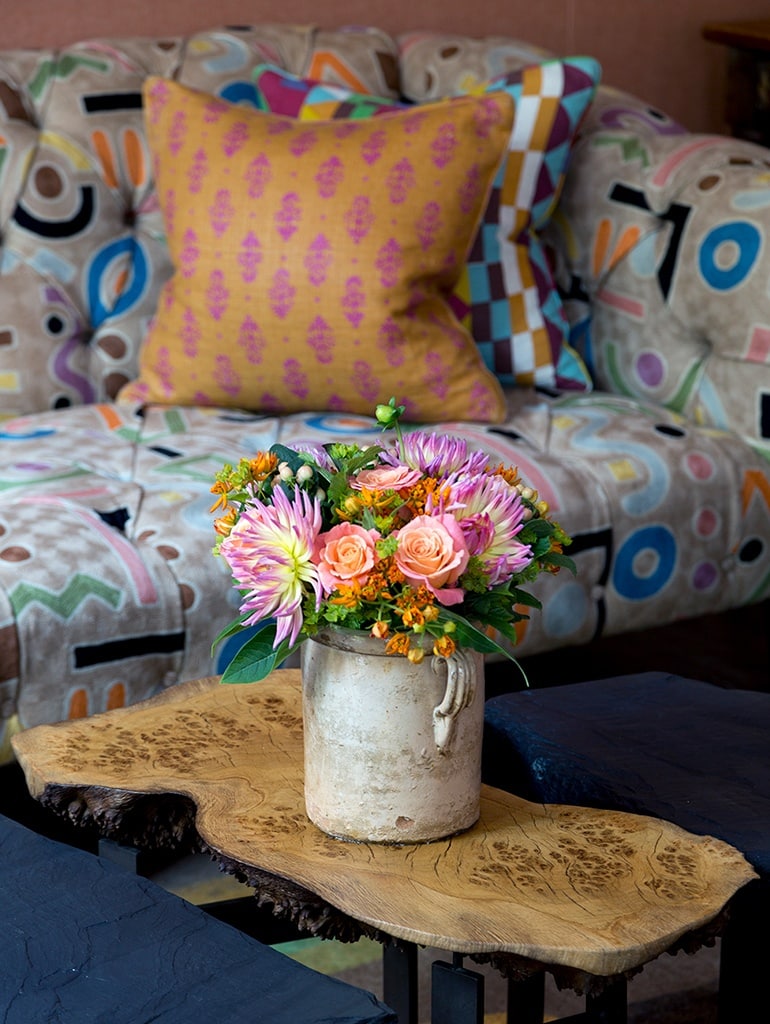We could talk about the importance of texture all day in the design studio. To us, the best interiors are those which infuse different textures and unexpected details within the room.
When choosing the textures and colour palette, we always consider the natural light within a room first.
If it is a Northern light, layers of textures on felt embroidery and patterned fabrics make a room feel warm. While in a south-facing room with good light, a darker colour on the walls works well, contrasted with brighter fabrics on the upholstery.
Fabric walling has become something of a trademark for Firmdale Hotels. We tend to opt for linen on our walls; it is at once comfortable and effortlessly chic. A plain linen backdrop treads a careful line between allowing other bold fabrics to simultaneously pop off and melt into their surroundings.
Texture is so important to the final aesthetic, as all our senses need to be fulfilled. Fabric walling creates a wonderful cocooned feeling; it absorbs the sound and adds warmth, yet is tailored and very hard-wearing.
Without texture, interiors can sometimes look flat and cold. Layering textures is one of the most important parts of our design process. It is the tactile qualities and details that capture the senses which make a room pop.
We choose fabrics rich with natural imperfections and texture within the weave. It’s an easy way to create a sense of understated luxury within a space. A blend of linens and wools, weaves and prints lend depth to the space as the raised surfaces reflect light and create shadows.
In the drawing room at Ham Yard Hotel, you instantly feel relaxed with the soothing autumnal colour tones throughout the bright room.
The textures from the crewel embroidered sofa by Pierre Frey, the fine embroidered linen curtains in my Tea Leaf fabric for Christopher Farr Cloth, the antique Swedish Armoire and a burnt wood and slate coffee table by Tom Stogdon all combine to create an interesting and layered living space.

